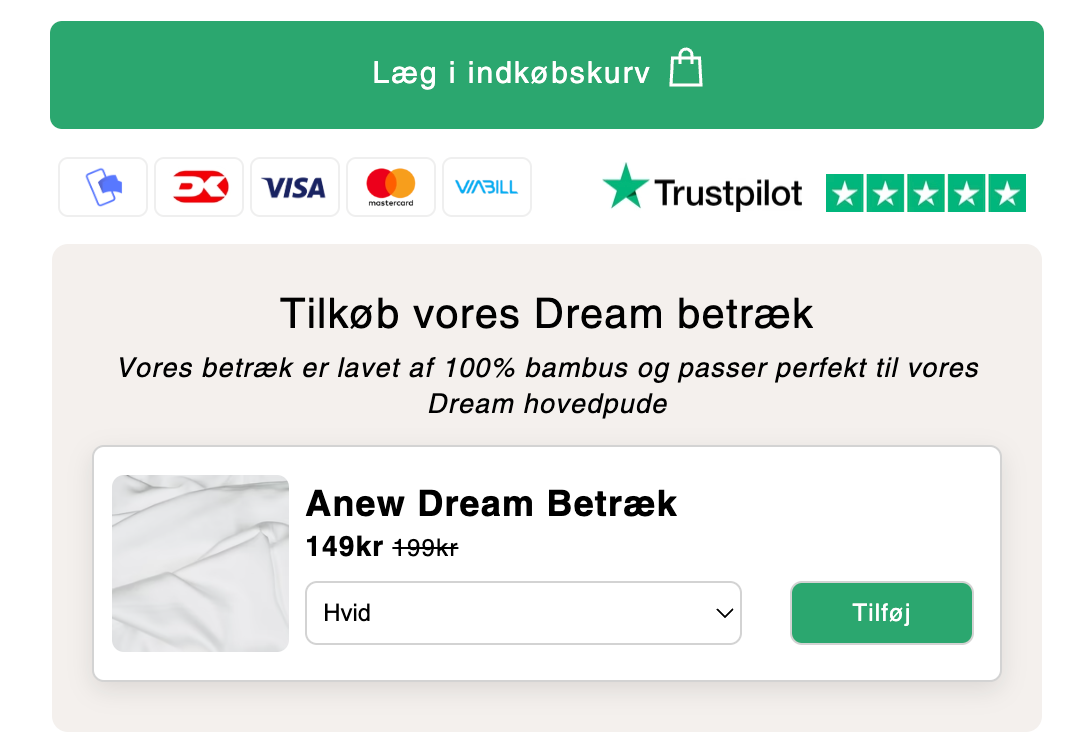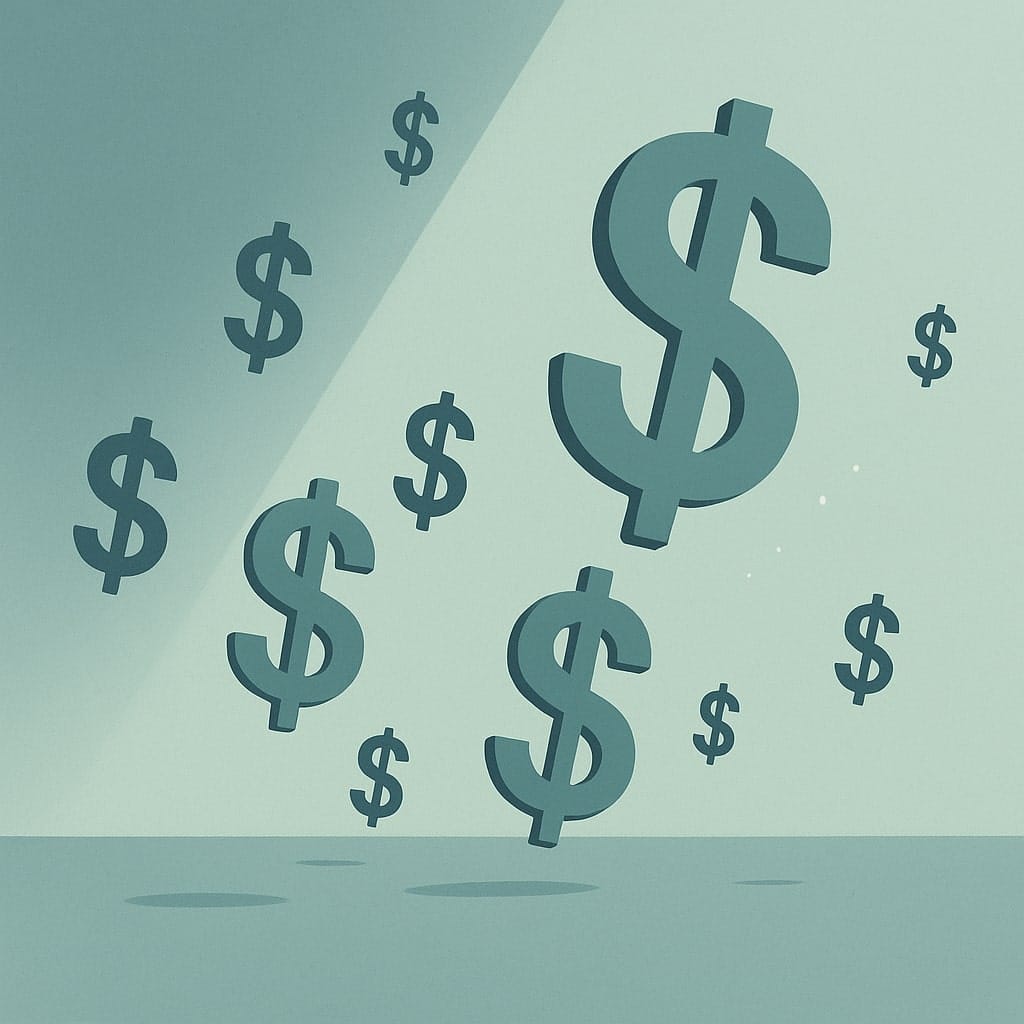If you want to run a successful e-commerce store in 2025 and beyond, you need to get your pricing right, offer the right products, have great marketing, and know when you’re being overcharged.
Recently, we’ve been working on improving our profits at anew sleep and have made some important steps to run a more profitable business.
Here are seven initiatives that worked well for us and might work for you:
Slim down on tools
It’s easy to get carried away with new tools and apps, but they can really add up and hurt your profits. Some tools even take a cut of your revenue, which can impact your future profitability and EBITDA. Luckily, this is an easy fix.
Here are my top tips when it comes to tools:
- Avoid Revenue-Based Pricing: Choose tools that don’t charge based on your revenue. The worst are tools that take a percentage of your revenue — no tool should ever do that.
- Opt for Lifetime or One-Time Payments: Look for tools that offer lifetime access or one-time payment options.
For example, we found someone selling a lifetime account for Accuranker for $575 - their smallest monthly plan is $137. We've had it for about 2 years now saving us +$2,700 so far. - Assess Need vs. Want: Be critical about whether a tool is truly necessary or just nice to have. Sometimes, it helps to have someone else challenge your choices to make sure you’re only keeping what you really need.
- Watch for Automatic Upgrades: Be careful with tools that upgrade based on usage but don’t downgrade automatically. Cough, Klaviyo, cough. 😮💨
- Regularly Audit Your Tools: Periodically review and cancel any tools or services you no longer need.
- Use, Cancel, Use, Cancel: It’s okay to use tools for a short period. Plan when you need specific costly tools and cancel them after a set time. This helps reduce costs over time.
I’ve helped multiple businesses audit their tools and often find savings between $10,000 to $100,000 annually.
I’m sure you can find better uses for that kind of money than adding it to someone else’s profit.
Commoditized services
When starting a business, people often ask for referrals for shipping partners, payment solution providers, 3PL, marketing partners, and so on.
However, some of these services are commoditized, and some are not.
On the other hand, non-commoditized services include software development, marketing, and consulting services, as these require specialized expertise and tailored solutions unique to your business needs.
Recently, we’ve found huge savings in multiple areas such as:
- Shipping Rates: We renegotiated our shipping rates for better deals.
- 3PL Handling Fees and Storage: We reduced costs by finding more competitive rates.
- Payment Solutions Fees: We uncovered and eliminated hidden fees in our payment processing, such as hefty charges for capturing payments after 7 days.
- Insurance Fees: We shopped around for better insurance rates.
If you’re not constantly reevaluating these costs and seeking opportunities to save, then they will silently but surely add more and more costs.
We experienced price increases due to inflation, but one partner continued to add 10% year on year — greedy? Maybe.
But if you’re sleeping on these things, one thing is sure: you’re losing out on your EBITDA margin and profitability.
Remember: You’re working hard for you, not for your suppliers of different goods and services.
Invest more in these 3 channels
- Search Engine Optimization
- Affiliate Marketing
- Email Marketing
These three channels are something anew sleep is going to invest more into during in 2025.
Not only are they really cost effective, earning more money for less spent on marketing — they are really effective for boosting profits.
It's really not uncommon to see a ROAS of 10, 15, 20 and even +25 with some of these channels if done correctly.
For SEO, it's all about creating high-ranking, high-converting collection pages and blog posts relevant to your products.
For affiliate marketing, you want to secure the best partners in your niche — getting first place in different "Best X" articles will bring you new customers at a cost you define.
For e-mail marketing, it's all about having a continuous flow of new subscribers, new exciting products to introduce, campaigns to spark interest, and flows to ensure high consistency and nurture new potential customers.
With these three channels we're going to heavily improve profitability.
Obsess about your AOV
The revenue of your e-commerce is determined by:
- Average Order Value
- Conversion Rate
- Cost Per Click (Visitor)
If you can increase how much people buy, how often they buy, and decrease the cost of acquiring a new visitor — well that's a winning cocktail. 🍸
Your e-commerce will instantly benefit from your average order value going up.
In anew sleep, we've had some really successful initiatives that drove an increase in the average order value.
Here are two of the top ones:
Suggesting natural add-on products
When people browse your products, it's ideal to prompt them to add relevant items that will complement well. E.g., we're selling our cooling pillow and for the people wanting to buy this, we prompt to also get our pillow cover for 149 DKK on top. This is being done both on the product page and in the cart.

Buy for over $199 and get a sleeping mask for free
Earlier this year we ran an experiment, where all customers ordering for more than $199 would get a free sleeping mask ($29 value). Through it, we found that our AOV (average order value) had to increase by 0.9% to break even (as you naturally have orders over $199 already and you need to "pay" these with a free product).
When we ran the test for about 4 weeks, we found that our AOV increased by 2.3%.
While 2.3% doesn't sound like a lot on an order-by-order level — when looking across a full fiscal year, a 2.3% increase sure can be seen and felt — and it will help profits.
Get the right payment processing terms
The right payment processing terms can save you a lot of money and improve your profitability. We recently negotiated these terms in anew sleep and saved so much on this small change alone.
Here are some tips to help you get the best terms:
- Shop Around: Don't settle for the first payment processor you find. Compare different providers to find the best rates and terms for your business.
- Negotiate Lower Rates: Many payment processors are willing to negotiate their fees. Ask for lower transaction fees and see if they can waive additional charges.
- Watch for Hidden Fees: Be aware of hidden fees, such as charges for capturing payments after a certain number of days or fees for refunds and chargebacks.
- Choose the Right Pricing Model: Payment processors offer different pricing models, like flat-rate, interchange-plus, or tiered pricing. Choose the one that best suits your transaction volume and average order value.
- Ensure Transparency: Work with a payment processor that is transparent about their fees and terms. Avoid providers that make it difficult to understand what you're being charged for.
It stands for “Interchange Plus 0.1%.” It’s a pricing model used by payment processors where you pay the base interchange fee set by the credit card networks (like Visa or Mastercard) plus an additional 0.1% fee. This transparent model can be more cost-effective for businesses with high transaction volumes, as it separates the processor’s fee from the interchange fee.
By getting the right payment processing terms, you can reduce costs and keep more of your hard-earned revenue.
Invest heavily in content for paid
Investing in high-quality content for your paid ads can significantly boost your ad performance and ROI. Here are some key areas to focus on:
- User-Generated Content (UGC): Using UGC featuring your products can boost performance drastically. UGC adds authenticity and can be highly persuasive. Use independent creators or agencies to get UGC for your ads.
- Landing Pages: Make sure your landing pages are designed to convert. They should be visually appealing, load quickly, and have clear calls to action. Include high-quality images, videos, and customer testimonials (or UGC).
- A/B Test Content: Continuously test different versions of your ads and landing pages to see what performs best. Use the insights to refine your content and improve your results.
If you’d like an introduction, email me: kl@kristian-larsen.com
Investing in good content for your paid ads will attract more customers, increase conversions, and ultimately boost your profits.
Seek expert advice across everything
Years back I decided to pick up a mindset of:
"I am a student of life."
From there, I decided to ask to learn from people that have a different background than me. If they brought a unique and different perspective, I'd want to hear it.
That opened up a ton of new learnings in regards to almost anything life- and business-related.
This is also why I don't shy away from answering and hearing out (some) people cold emailing me saying they can help improve my business in specific areas.
And to my surprise, more often than not, I learn some important things that will catapult my revenue or profits to new heights.
For example, if I didn't respond to a cold DM on LinkedIn (sales pitch), I would never have learned about IC+0.1%.
“An expert is a man who has made all the mistakes which can be made, in a narrow field.” - Niels Bohr
Thanks for reading
My team recently freed up some time to work with growing e-commerce brands.
If you want to talk about how my agency can grow your e-commerce, you can schedule a call with me here:


